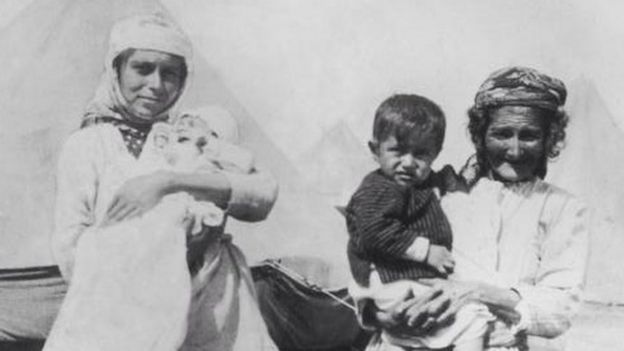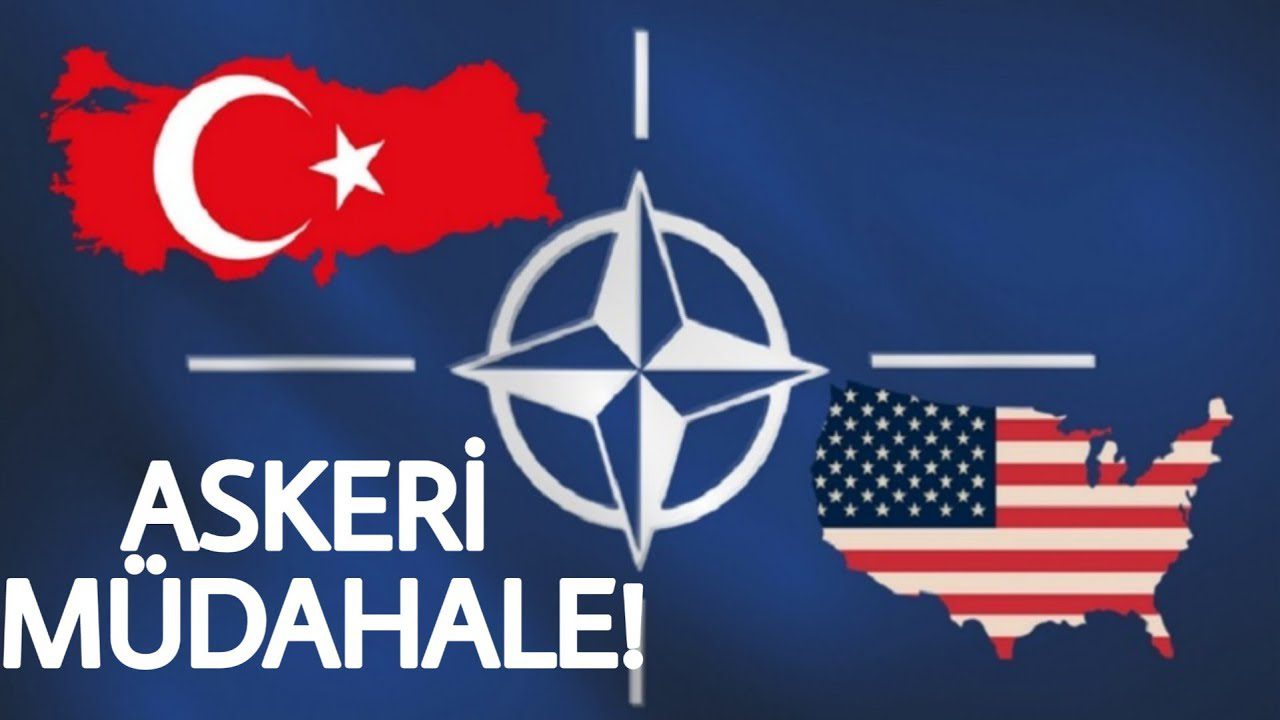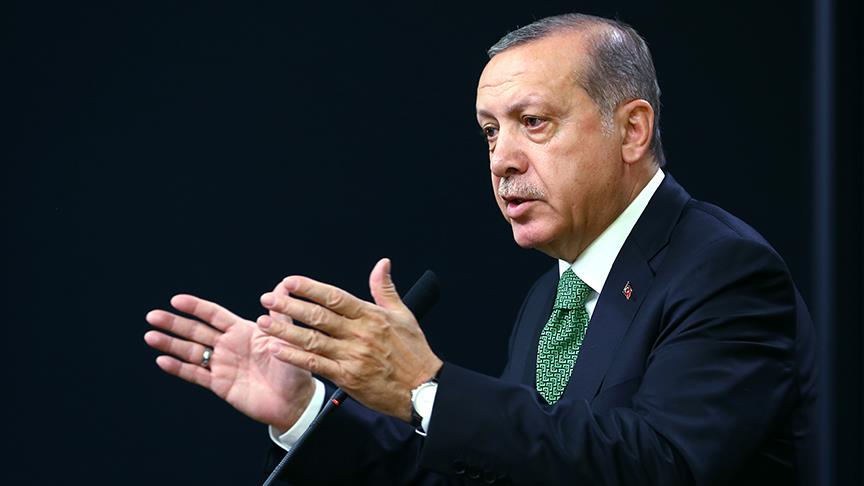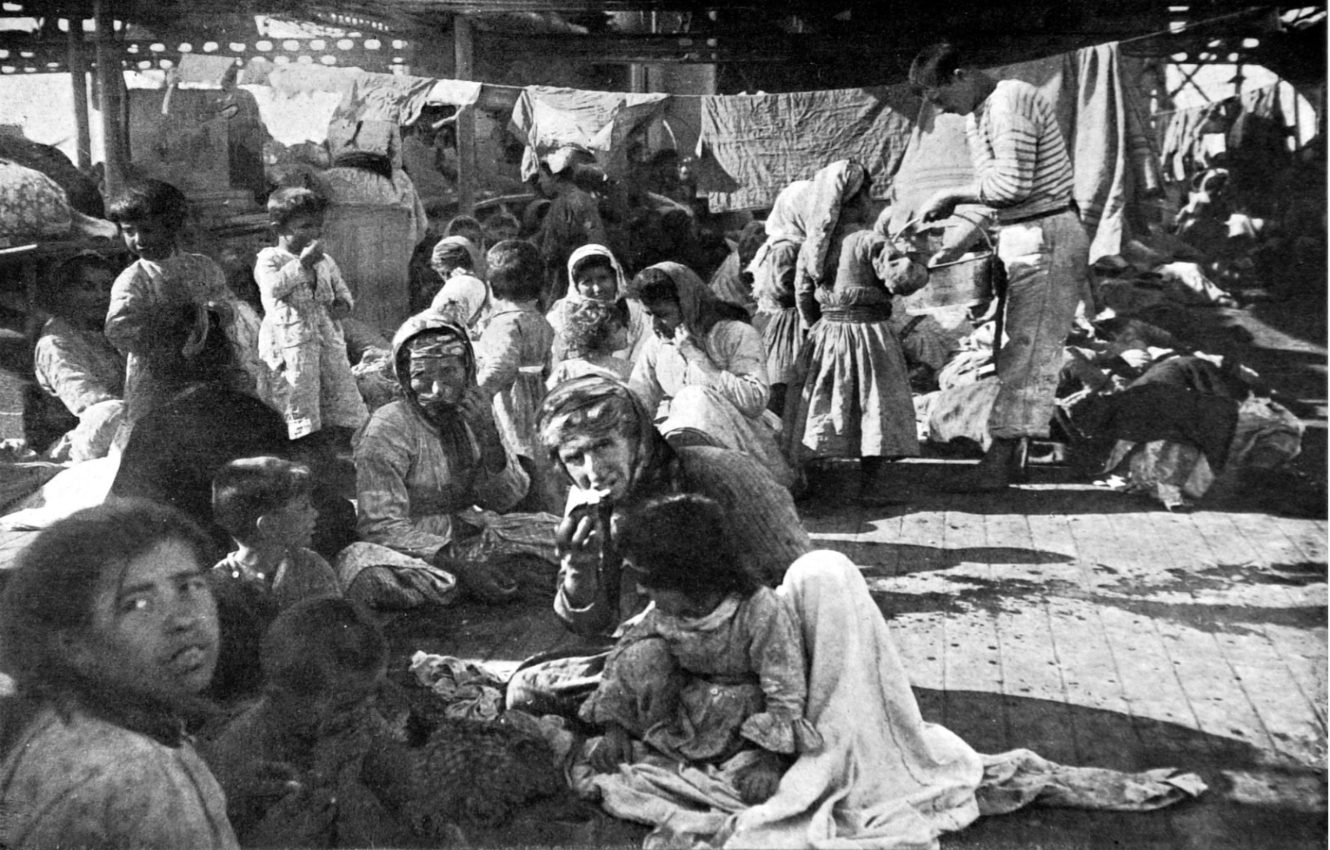In the wake of a nearly unanimous House resolution on the recognition of the Armenian Genocide, powerful voices are now calling for an accompanying Senate resolution and presidential action. The former, at least, is likely. Turkey bitterly opposes such action for obvious reasons and, to be honest, the reason that the resolution has gained traction at this moment has more to do with authoritarianism in Turkey and the invasion of Kurdish-held northeastern Syria than with history. Former U.N. Ambassador Samantha Power published a strident op-ed in the New York Times demanding that the United States acknowledge the “facts” and recognize the events of 1915 as a genocide.
As a matter of international convention the crime of genocide has a specific definition, the most important element of which is “the intent to destroy.” Another important element of such a charge is that it pertains to individuals rather than to entire countries or groups. You cannot hold a nation-state accountable for genocide (and, in this case, the Turkish Republic did not yet exist). Rather, you must charge individuals. Genocide is an accusation to be taken seriously and brought with the most stringent standards of evidence. Assertions of the need for ex post facto recognition of such a crime are inflammatory and dangerous, if for no other reason than that, in this case, the accused are long dead. Political recognition of a genocide in the House of Representatives or the halls of power in any other country do not endow the charge with factual legitimacy.
Examinations of the authentic historical evidence available today should be undertaken by historians. This might seem like an obvious claim, yet much of the literature on this topic tends to be dominated by non-historians. For example, Samantha Power is a lawyer, Taner Akcam is a sociologist by training, Fatma Müge Göçek is a sociologist, and Peter Balakian is a literature professor. We should keep in mind that professionally trained historians are highly specialized academically and the military and civil history of the late Ottoman imperial period is a very narrow field. It is easy to lodge an accusation today, but it is far harder to provide authenticated evidentiary material that passes a high standard of veracity. In the case of what happened to the Ottoman-Armenians 100 years ago, historians are left with archival documents, the accounts of witnesses, and the accounts of secondary observers. Reconciling why things happened and even the truth of what actually happened, from these sources, is enormously difficult even for trained historians with the appropriate linguistic and research skills.
Further, what we commonly call “history” is not the truth. History is always an interpretation of a set of facts concerning events in the past and, sadly, often skewed by preexisting and partisan views. Regarding the massacres in eastern Anatolia in 1915, the fact that thousands of Armenians were deliberately killed is not in question. However, the facts about who the perpetrators were and the level at which decisions were made to kill Ottoman-Armenians are in question. Moreover, the larger question about whether there was or was not a centralized plan of extermination remains hotly contested in academia. Unlike the evidentiary trail historians have followed investigating the Holocaust, there is, in late 2019, no authentic documentary evidence available that conclusively answers these questions. Rather, there is a body of speculative conjecture based on the presumption that correlation equals causation — these are not truths, these are arguments by assertion.
In terms of the extant scholarship today, there are six major theses about why the mass killings of Ottoman-Armenians occurred in eastern Anatolia in 1915, which I reviewed in my book on the topic. All six embrace the same existing evidence but weigh it and interpret it differently. These are, in no particular order:
- The ethnic homogenization, or Turkification, of Anatolia
- The intent to destroy, or premeditated genocide
- Cumulative radicalization, or non-premeditated genocide
- Retaliation and justification, or a response to the killing of Ottoman Muslims
- State security and the existence of a large insurgency
- Operational security and counter-insurgency by relocation
What can actually be proven? First, there were many, many well-documented episodes of localized massacres of Ottoman-Armenians. Second, many Ottoman officials actively helped to save large numbers of Ottoman-Armenians. Third, Armenian revolutionary committees actively conspired with the Russian empire to raise rebellion in the Ottoman army’s rear areas in support of Russian offensives. Fourth, the Ottoman army used contemporary practices of relocation employed by the British in the Boer republics, the Americans in the Philippines, and the Spanish in Cuba as an operational counter-insurgency approach (which I review in detail in my latest book).
What cannot be proven at the present time? First, the number of Ottoman-Armenians who were killed or died as a result of relocation, and second, the motives of Ottoman officials at national, provincial, and local levels who participated in the relevant events.
There is a large amount of archival evidence that has been excluded from the Armenian version of the narrative. Much of this evidence is inconvenient for the Armenian diaspora because it provides counterpoints to the notion that an actual genocide occurred. The exclusion of inconvenient evidence has led to a mythology about World War I that presents the entire Ottoman-Armenian population solely as victims. British, French, Russian, and Turkish archives provide ample probative evidence on a number of facts that do not support the case that a genocide took place. I will briefly review some of them here. Please keep in mind that I am not providing the full story here, but rather reporting established facts that counter the narrative that recently took the U.S. House of Representatives by storm.
Ottoman authorities had reasons to be gravely concerned by the activities of Armenian revolutionaries and their external sponsors and supporters. In the late 1880s, the Ottoman-Armenians formed a number of secret cell-like terrorist revolutionary groups called committees. The well-armed Armenian Revolutionary Committees (the Dashnaks and Hunchaks in particular) actively rebelled against the Ottoman state in 1914 and 1915.
Both the Central Powers and the Allies actively tried to foment rebellions in the Middle East during World War I in order to weaken their enemies. And these Armenian Revolutionary Committees were encouraged to rebel and were supported by the Russians, British, and French. As the war dragged on, prominent Armenians (both Ottoman and Russian Armenian citizens) led Russian-based conventional Armenian military forces against the Ottomans. Famous Armenian leaders such as Andranik and Dro formed Druzhiny (legions) which fought side-by-side with the Russian Army.
They had help from abroad from their diaspora activities. Like the Greek, Serbian, and Bulgarian communities before them, the Armenian diaspora, such as it existed in 1914, actively conspired with the Allies to bring an independent Armenia into existence. This effort continued after the war through 1921.
Critically, while many Ottoman-Armenians supported the revolutionary committees, many also supported the government. In fact, many loyal Ottoman-Armenians fought for the Ottoman state throughout the war and, by 1918, some 350,000 Ottoman-Armenians remained safely in their homes in the western regions of the empire. It is worth considering that the western provinces, such as Istanbul, Edirne, Izmir, and Bursa, which were not in the war zone, were excluded from the relocation orders. In the post-war period, however, most of these would choose to emigrate from the new Turkish republic, leaving only around 50,000 to 70,000 Armenian-Turks there today.
What were Ottoman authorities to do when faced with these real threats to their empire’s territorial integrity in the midst of a war that was like nothing the world had even seen? The removal of the Ottoman-Armenian population from the six eastern provinces effectively constituted a counter-insurgency campaign. And by turning to the relocation of populations, the Ottomans were using a method widely used by other empires both before and after World War I. This is not meant to defend these methods, but to accurately describe them and place them in historical context.
The Ottoman campaign contrasts with what Nazi Germany did to European Jewish victims of the Holocaust in some important ways. For example, Nazi Germany clearly sought to destroy all of European Jewry and, in an effort to do so, removed nearly complete Jewish populations to extermination camps in a way accurately characterized as systematic. In contrast, the removal and mass murder of Ottoman-Armenians in 1915 was localized and not systematic in eastern Anatolia. In some places such as Diyarbekir and Sivas, almost all Ottoman-Armenians were killed, while in other places, such as Adana and Aleppo, very few Ottoman-Armenians were killed.
As a matter of historical record, the Ottoman Empire — in comparison with Russia or Austria-Hungry — treated ethnic minorities with respect. As the news of civilian Armenian victimization reached Istanbul, the Ottoman state took active measures to halt and alleviate the localized mass murder of Ottoman-Armenians in the summer of 1915. The accused were often rogue provincial officials and sometimes Kurds or Circassians. In subsequent trials conducted by the Ottoman Ministry of Justice, hundreds of individuals were held accountable in 1916 for crimes against Ottoman-Armenians.
Now let’s turn to these crimes and atrocities, of which there were many. It is important to keep in mind, however, that there was no single period of mass killings. There were three historically discrete periods of the mass murder of Ottoman-Armenians during and after World War I. The first was during the 1915 eastern Anatolian removal. The second was during the 1918 recovery of Erzincan and Erzurum by the Ottoman army. And the third was in 1921 during the Turkish nationalist recovery of Cilicia and Kars/Ardahan.
Further, there was no Ottoman premeditated plan of extermination against the empire’s Christians. In fact, many Ottoman officials (like Cemal Pasha) directly protected and helped relocate Ottoman-Armenians in 1915, enabling thousands to survive.
It is commonly said that 1.5 million Ottoman-Armenians — a number that amounts to nearly 100 percent of the pre-war population — were killed. In reality, some 300,000 Ottoman-Armenians fled to Russia, became refugees there in 1914–1915, and survived the war. Combined with the known Ottoman-Armenians who were not relocated, it is clear that large numbers (we do not know exactly how many) survived the experience of war. And there were, of course, other victims. It is largely forgotten today that during periods of Armenian and Russian occupation of Ottoman territory hundreds of thousands of Ottoman Muslims were killed by the Armenians. While this never justified the reciprocal killing of Armenians, it inflamed the already tense and dangerous situations.
The Ottoman Teşkilatı Mahsusa (the Ottoman Special Organization) stands accused of genocidal acts and has been labeled as the model for the Nazi Einsatzgruppen. However, the Ottoman archival records tell another story that disassociates the organization from relocating Armenians. Like its British counterpart in Cairo, the Special Organization was not organized to kill civilians. Rather, it was a CIA-like intelligence organization that also attempted to raise Muslim rebellions in Allied territories.
Opinions among the professional historians specializing in the late Ottoman imperial period about the genocide question are mixed and most try to avoid the topic entirely. It can ruin a budding academic career when researchers are characterized incorrectly as “genocide deniers.” The late American historian Donald Quataert, a specialist in Ottoman history, called it “the elephant in the room” for historians of the Ottoman Empire. Was there a genocide? This is an open question, and one that is more complicated than the recent House of Representatives resolution lets on. Much more research in the Turkish archives, which are open to historians, should be done to answer this important historical question conclusively. I do not need to convince you that history is often politicized to advance personal or collective aims — you know this already. In this case, let’s not forget the context: This House vote was paired with a vote on the PACT Act, which “imposes sanctions and various restrictions related to Turkey’s military invasion of northern Syria.” I am not writing to defend what Turkey is doing in Syria, but to point to a problem: The politicization of history in this particular case further damages Turkish-American relations at a time when neither country can afford it.
Dr. Edward J. Erickson is a retired professor of military history from the Marine Corps University. He has published extensively on World War I in the Middle East. Some of his recent books include A Global History of Relocation in Counterinsurgency Warfare, Palestine, The Ottoman Campaigns of 1914-1918, Gallipoli, Command under Fire, and Ottomans and Armenians, A Study in Counterinsurgency. He is currently writing a book on the Turkish Army in the War of Independence (1919 to 1923).
CORRECTION: A previous version of the article misspelled the name of a professor at the University of Michigan; it is Dr. Fatma Müge Göçek, not Gökçe.
Image: Wikicommons









Erdogan’s power grab should worry Nato
Hannah Lucinda Smith
The Turkish president is reshaping the western alliance’s second-biggest army in his own image
This month Recep Tayyip Erdogan, president of Turkey, attended commemorations for the anniversary of the death of Kemal Ataturk, the general who beat Britain and its allies at Gallipoli and went on to found the Turkish republic. The day is designed to humble any living Turkish leader. Erdogan walked behind soldiers carrying a wreath picked out with the Turkish flag through the neo-classical promenade and plaza of Anitkabir, Ataturk’s mausoleum in the heart of Ankara.
In the sarcophagus hall, he bowed his head to the body of the only man who still rivals him in Turkey, as the Last Post and the national anthem were played. The soldiers saluted Ataturk, not Erdogan.
But as he walked back outside, the tables turned. A chorus went up…
Continue reading
Subscribe to The Digital Pack
for instant access
thetimes.co.uk/subscribe/digital/